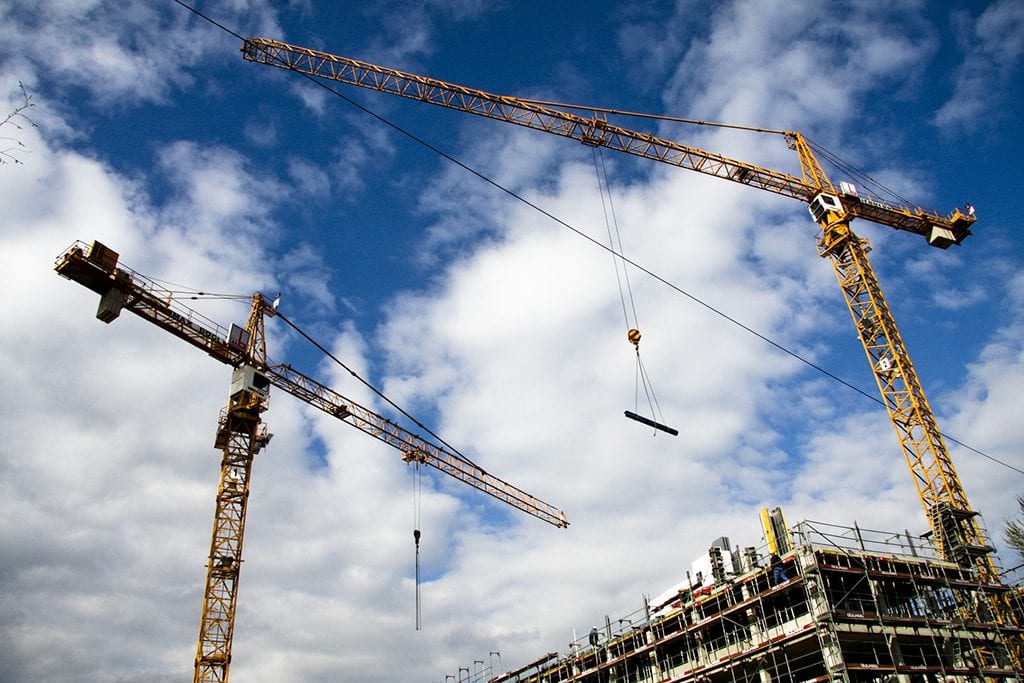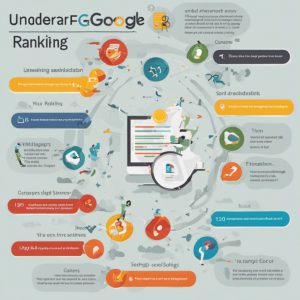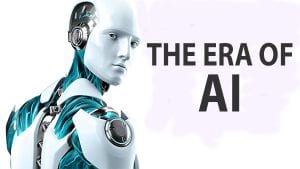
AIIB: Paving the Future of Asian Infrastructure
Updated Oct 21, 2023
The responsibilities and opportunities accompanying this transformation are substantial in an era marked by China’s rapid ascent as a global economic powerhouse. The world’s eyes are firmly fixed on Asia as a hub of growth and development, and in response, China has taken on the challenge of revolutionizing infrastructure and financial systems throughout the region. A key protagonist in this grand transformation is the Asian Infrastructure Investment Bank (AIIB), established in Beijing in 2016 with a mandate to bolster infrastructure development in Asia and beyond.
The AIIB has swiftly risen to prominence, positioning itself as a pivotal player in the global financial arena. Its inception reflects China’s commitment to promoting regional connectivity, economic integration, and growth. Focusing on financing infrastructure projects, the AIIB aims to bridge the extensive infrastructure gap in Asia and contribute to the region’s sustainable development.
The AIIB has garnered extensive attention and support from developed and developing nations as an international financial institution. Its membership has burgeoned, reaching 103 members by 2021. This diverse and dynamic membership base facilitates collaboration and knowledge exchange among countries, allowing the AIIB to draw upon a wide spectrum of expertise and perspectives.
Operating on principles of openness, transparency, and environmental sustainability, the AIIB places considerable emphasis on incorporating social and environmental considerations into project planning and execution, ensuring that infrastructure development aligns with global sustainability objectives. The AIIB seeks to mitigate the adverse environmental impacts often associated with large-scale construction projects by promoting green and resilient infrastructure.
Furthermore, the AIIB’s approach to financing is characterized by flexibility and innovation. It offers an array of financial instruments tailored to meet the diverse needs of its member countries, enabling it to support projects of varying sizes and complexities. This flexibility extends to various financial tools, from loans to equity investments and grants, supporting initiatives as diverse as vast transportation networks and small-scale renewable energy projects.
Beyond providing financial resources, the AIIB nurtures partnerships and knowledge exchange, collaborating with other multilateral development banks, international organizations, and private sector entities. This collaborative approach ensures that its investments are aligned with broader regional and global development objectives.
The Belt and Road Initiative: A Bold Vision for Global Connectivity
The Belt and Road Initiative (BRI), unveiled by Chinese President Xi Jinping in 2013, is a grand vision for global connectivity that has the potential to reshape the world economy. This ambitious project, often called the New Silk Road, seeks to link Asia, Africa, the Middle East, Eurasia, and Europe through upgraded transportation, energy, and telecommunications infrastructure.
The BRI is not just about building roads, railways, and ports, but it’s also about creating a new platform for international trade and investment. It’s about fostering economic cooperation and cultural exchange, promoting policy coordination, and building a community with a shared future for mankind.
The scale of the BRI is genuinely staggering. It involves over 130 countries and international organizations, covering more than 60% of the world’s population and about one-third of the global GDP. The initiative has already led to the signing of numerous cooperation agreements and the launch of hundreds of projects, ranging from railways in Kenya to power plants in Pakistan.
However, the BRI is not without challenges. The massive funding required for these infrastructure projects is a significant hurdle. This is where the Asian Infrastructure Investment Bank (AIIB) comes into play. Established in 2015, the AIIB is a multilateral development bank that aims to support infrastructure building in the Asia-Pacific region. It provides a crucial funding source for BRI projects, helping to turn the bold vision of global connectivity into reality.
The BRI is a testament to China’s growing influence and commitment to fostering global economic cooperation. It’s a bold, exciting initiative that could redefine worldwide connectivity and reshape the world economy in the 21st century.
The AIIB: A Pivotal Role in Infrastructure Financing
Since its establishment in 2016, the AIIB has gained traction as a reputable infrastructure financing by incorporating innovative technologies and green practices.
One of the AIIB’s notable initiatives is the Belt and Road Initiative (BRI), a colossal infrastructure project spanning multiple continents. The AIIB plays a pivotal role in financing BRI projects, which include the construction of ports, railways, highways, and power plants. These projects have transformed landscapes and created new economic corridors, fostering trade and investment opportunities for participating countries.
Moreover, the AIIB is at the forefront of promoting sustainable infrastructure development. Recognizing the urgency of addressing climate change, the bank has prioritized investments in renewable energy projects. This includes funding solar and wind farms and supporting the development of intelligent grid systems and energy storage technologies. The AIIB is driving the transition towards a low-carbon future by championing clean energy initiatives.
In addition to its financial contributions, the AIIB serves as a platform for knowledge sharing and collaboration. The bank facilitates partnerships between member countries, encouraging the exchange of best practices and expertise in infrastructure development. Through conferences, workshops, and research publications, the AIIB fosters a vibrant ecosystem where ideas are shared and innovative solutions are cultivated.
Looking ahead, the AIIB is poised to play an even more significant role in shaping the future of infrastructure financing. With a growing membership and a commitment to sustainable development, the bank is well-positioned to tackle the complex challenges of our time. By leveraging technology, promoting green initiatives, and fostering global cooperation, the AIIB is driving a new era of infrastructure development that is inclusive, resilient, and transformative.
A Prosperous Asia: The Key to a Stronger Global Economy
Together, the AIIB and the ADB are poised to unlock the full potential of Asia’s economic prosperity. By channeling investments into infrastructure development, they can create a ripple effect that stimulates trade, increases connectivity, and boosts productivity.
The AIIB’s focus on sustainable infrastructure aligns perfectly with the global shift towards green economies. The bank’s investments in renewable energy, eco-friendly transportation systems, and climate-resilient infrastructure contribute to mitigating environmental challenges and present lucrative job creation and economic growth opportunities.
One key aspect that sets the AIIB apart is its emphasis on inclusive development. The bank recognizes that infrastructure projects should benefit all segments of society, including marginalized communities and women. By incorporating social safeguards and promoting gender equality, the AIIB ensures that its investments have a positive and lasting impact on the lives of people in the region.
Moreover, the AIIB’s presence in Asia has catalyzed private sector participation in infrastructure financing. The bank’s co-financing model encourages collaboration between public and private entities, leveraging their respective strengths and resources. This approach not only diversifies funding sources but also brings in innovation and expertise from the private sector, leading to more efficient and sustainable infrastructure solutions.
As Asia’s economic engine continues to power ahead, the AIIB’s role in infrastructure financing will be instrumental in securing a more robust global economy. By addressing the infrastructure deficit, promoting sustainability, and fostering inclusive development, the AIIB is paving the way for a prosperous and interconnected Asia that benefits the region and the world.
A New Economic Order for Asia: Moving Away from Political Interference
This departure from political interference has sparked a wave of excitement and intrigue in Asia. The AIIB’s commitment to non-interference means that countries can pursue infrastructure projects based on their own economic and developmental needs, free from external political pressures. This approach fosters a sense of autonomy and empowerment among participating nations, as they can shape their financial destinies.
The AIIB promotes transparency, efficiency, and accountability by focusing on business-oriented financing. The bank’s rigorous project assessment and due diligence ensure that investments are allocated to economically viable and sustainable ventures. This safeguards the bank’s financial resources and instills confidence in investors and partners, attracting more stakeholders to collaborate on transformative projects.
The AIIB’s approach also encourages regional cooperation and integration. By financing cross-border infrastructure projects, the bank promotes connectivity among nations, facilitating the movement of goods, services, and people. This enhanced connectivity opens up new markets, expands trade opportunities, and fosters economic growth across borders. It paves the way for a more interconnected and economically dynamic Asia, where countries collaborate for mutual prosperity.
Furthermore, the AIIB’s emphasis on non-interference creates an environment conducive to innovation and entrepreneurship. Countries can explore new ideas, experiment with emerging technologies, and develop cutting-edge solutions to address their unique infrastructure challenges. This freedom from political constraints nurtures a culture of creativity and risk-taking, propelling Asia toward becoming a hub of innovation and technological advancements.
As the AIIB continues to gain prominence in the infrastructure financing landscape, its commitment to non-interference signals a new economic order in Asia. By emphasizing transparency, autonomy, and collaboration, the bank is steering the region toward a future where financial considerations rather than political agendas drive infrastructure development. This shift promises to unlock the full potential of Asia’s economic power and create a more prosperous and interconnected continent for generations to come.
The AIIB: A Game-Changer for Regional Development
With its substantial financial resources, the AIIB plays a game-changing role in regional development. The bank’s ability to provide crucial funding for infrastructure projects addresses the pressing need for improved connectivity, modernized transportation networks, and upgraded energy systems.
The AIIB’s investments are limited to physical infrastructure and encompass sectors like education and healthcare. By supporting the development of educational institutions and healthcare facilities, the AIIB is strengthening human capital and social welfare, which are vital components of sustainable development.
Moreover, the AIIB’s approach to project financing is innovative and forward-thinking. The bank recognizes the importance of incorporating cutting-edge technologies and sustainable practices into infrastructure projects. By leveraging advancements in areas such as renewable energy, digital infrastructure, and smart city solutions, the AIIB is transforming traditional infrastructure into modern, efficient, and environmentally friendly systems.
The impact of the AIIB’s investments extends beyond economic development. The bank promotes peace and stability in the region by fostering regional cooperation and integration. Through infrastructure connectivity, countries are encouraged to engage in peaceful trade and collaboration, reducing the likelihood of conflicts and misunderstandings.
Furthermore, the AIIB’s inclusive approach ensures that infrastructure development benefits reach all segments of society. The bank prioritizes projects that promote social inclusion, gender equality, and poverty reduction. This commitment to inclusivity ensures that marginalized populations access essential services and opportunities for economic advancement.
As the AIIB continues to expand its influence and mobilize resources, it is reshaping the landscape of regional development. The AIIB is propelling Asia toward a future of prosperity, resilience, and shared progress by facilitating partnerships, embracing technological advancements, and prioritizing sustainability and inclusivity. The bank’s game-changing role is transforming the region and inspiring a new era of global development that prioritizes collaboration, innovation, and sustainable growth.
How AIIB is Revolutionizing Global Infrastructure?
Here are some examples of the Asian Infrastructure Investment Bank’s (AIIB) projects and investments up until 2021:
1. Pakistan National Motorway M-4: In 2021, the AIIB approved a loan of $188.5 million to support the construction of a 64-kilometer section of the M-4 motorway in Pakistan. This project aims to improve connectivity and enhance regional trade and economic growth.
2. Uzbekistan Power Distribution Enhancement: The AIIB provided a loan of $60 million in 2020 to upgrade and modernize the power distribution network in Uzbekistan. The project is expected to improve the reliability and efficiency of electricity supply, benefiting households and businesses.
3. Mumbai Metro Line 4: In 2018, the AIIB approved a loan of $500 million for the construction of Mumbai Metro Line 4 in India. This project will help alleviate traffic congestion and improve urban mobility in Mumbai, one of India’s largest cities.
4. Indonesia National Slum Upgrading Project: The AIIB provided a loan of $250 million in 2019 to support the Indonesian government’s efforts to upgrade and develop slum areas in selected cities. The project aims to improve living conditions and provide basic infrastructure services to vulnerable communities.
5. Egypt Suez Oil Processing Company Refinery Upgrade: In 2018, the AIIB approved a loan of $200 million for the upgrade and expansion of the Suez Oil Processing Company refinery in Egypt. This project aims to enhance the country’s refining capacity and improve the quality of petroleum products.
6. Bangladesh Natural Gas Infrastructure and Efficiency Improvement: The AIIB provided a loan of $60 million in 2017 to improve natural gas transmission, distribution, and efficiency in Bangladesh. The project aims to enhance energy access and promote sustainable development in the country.
These are just a few examples of the AIIB’s projects and investments. The bank has been involved in various sectors, including energy, transportation, water supply and sanitation, urban development, and more. For a comprehensive and up-to-date list of the AIIB’s projects and investments, I recommend visiting the AIIB’s official website or referring to their annual reports and press releases.
How Does AIIB Prioritize Infrastructure Projects?
The AIIB has a rigorous process for prioritizing infrastructure projects to invest in. The bank follows a set of criteria and guidelines to ensure that its investments align with its strategic objectives and contribute to sustainable development. Here are some key factors that the AIIB considers when prioritizing infrastructure projects:
1. Development Impact: The AIIB assesses the potential development impact of a project, considering factors such as economic growth, poverty reduction, job creation, and social inclusion. Projects that can potentially generate significant positive effects on the local economy and society are given priority.
2. Financial Sustainability: The AIIB evaluates projects’ financial viability and sustainability. It assesses the project’s revenue-generating potential, cost recovery mechanisms, and long-term economic feasibility. Projects demonstrating a solid financial foundation and a clear path to self-sustainability are more likely to be prioritized.
3. Environmental and Social Sustainability: The AIIB strongly emphasizes environmental and social sustainability. It evaluates projects’ ecological and social risks and impacts, ensuring compliance with international standards and best practices. Projects that incorporate sustainable practices, promote climate resilience, and safeguard the rights and well-being of affected communities are given priority.
4. Regional Connectivity and Integration: The AIIB considers projects that enhance regional connectivity and integration. It looks for projects that improve transportation networks, promote trade facilitation, and foster economic cooperation among countries. Projects that have the potential to create synergies and strengthen regional collaboration are prioritized.
5. Innovation and Technology: The AIIB values projects that incorporate innovative technologies and solutions. It looks for projects that leverage technology to enhance efficiency, sustainability, and connectivity. Projects that embrace digital infrastructure, renewable energy, smart city solutions, and other innovative approaches are given priority.
6. Collaboration and Co-financing Opportunities: The AIIB actively seeks opportunities for collaboration and co-financing with other development institutions, regional banks, and private sector entities. Projects with the potential for partnerships and co-financing arrangements are more likely to be prioritized.
By carefully evaluating projects based on these criteria, the AIIB ensures that its investments positively impact sustainable development, promote regional cooperation, and contribute to the overall well-being of the communities and countries involved.
In Conclusion
The Asian Infrastructure Investment Bank (AIIB) is ushering in a new era in Asian infrastructure. With an ambitious agenda and a focus on connectivity and prosperity, the AIIB is transforming the region’s development. The AIIB’s rapid rise in just a few years reflects its pivotal role in financing infrastructure across Asia and beyond.
As part of the Belt and Road Initiative (BRI), the AIIB is a key player in reshaping the economic landscape, facilitating cross-border projects, and boosting economic growth. With an expanding membership of 103 nations, it has already approved over $20 billion in loans and investments for energy, transportation, education, and more projects.
This institution brings a fresh perspective, avoiding political interference and focusing on pragmatic, win-win results. By doing so, the AIIB is poised to play a critical role in projects like the China-Pakistan Economic Corridor and the China-India-Bangladesh-Myanmar initiative, opening the way for a more prosperous and interconnected future.
The AIIB is not just a game-changer for regional development; it’s a global catalyst for change. It’s time to embrace this exciting transformation as the AIIB paves the future of Asian infrastructure, setting the stage for a new era of prosperity and progress.
Dive into Engrossing Articles

When To Buy The Dip: Your Path to Investment Success

The China USA war: The Trade War of the Century.

Cool Superpower Ideas: Exploring Excellence in Various Fields

Unleashing the Bear: Russia Strikes Syria with Impact

Igniting Passion: The Thrilling Digital Sex Revolution

Navigating Fear & Opportunity in the October Stock Market Crash

Freedom and Independence: Inalienable Imperatives

Lagging Economic Indicators: Time to Thrive or Perish

Unipolar World Shakeup: US Superpower Status Fading Away

The House of Saud: Divine Rule and Deeds

People Also Ask: Decoding Google’s SERP Ranking Factors

The Greatest Wealth Is Health: US From First to Last

Ponzi Scheme Examples: The U.S. Treasury as a Prime Instance

AI-powered companies for 2023 & Beyond



